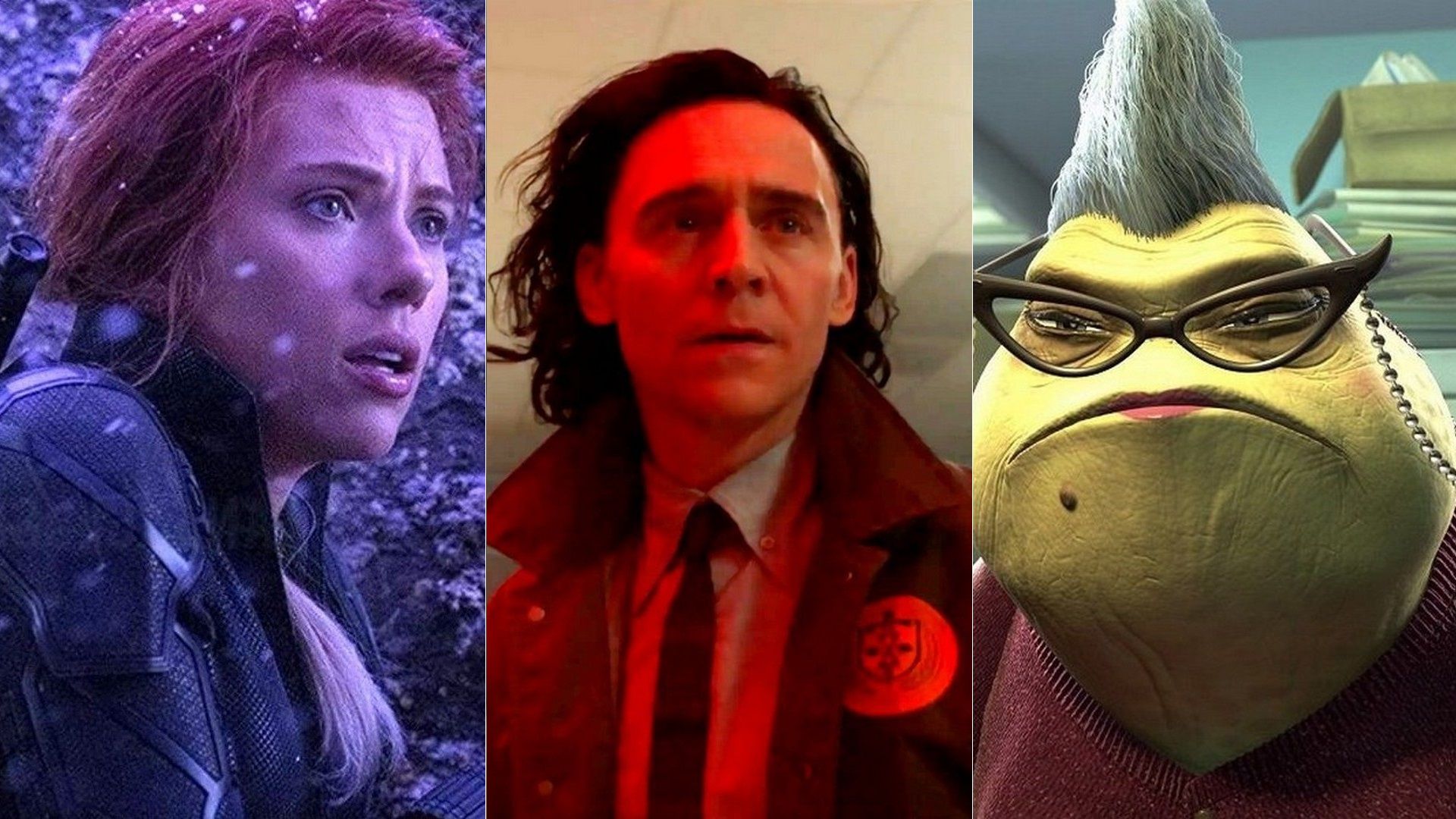
Caution: Spoilers ahead for Loki episode 2
They have a saying in Asgard - where there are Loki episodes, Marvel Easter eggs are near. The third of Disney+'s MCU releases, Loki made a strong start, despite a premiere heavy with exposition. The opening episode charted Loki's fall from grace after his timeline deviation in Avengers: Endgame, while establishing his new role advising Owen Wilson's Major Mobius, who is desperately hunting a dangerous Loki variant. Rocked by glimpses of his grim future and a draw full of useless Infinity Stones, Loki is left with little choice but to humbly accept there's no escaping the Time Variance Authority.
Titled "The Variant," Loki episode 2 sends Wilson into the field with Tom Hiddleston tagging along. Although the odd couple struggle at first, Mobius continues to fight the God of Mischief's corner, and by the episode's end, the roots of a friendship are sprouting. Though he might've secretly been planning to overthrow the TVA, Loki now has little choice but to cooperate with his time-fiddling friends, since his evil counterpart shows precisely zero interest in forming an alliance.
Loki's premiere set a bountiful precedent for Marvel Easter eggs, with the TVA corridors proffering nods to both MCU history and the character's dense comic book lore. Episode 2 continues that pace, hiding some fascinating connections to mysterious fictional corporations, Thor: Ragnarok, and even the home of Thanos. These are the Easter eggs found lurking in "The Variant."
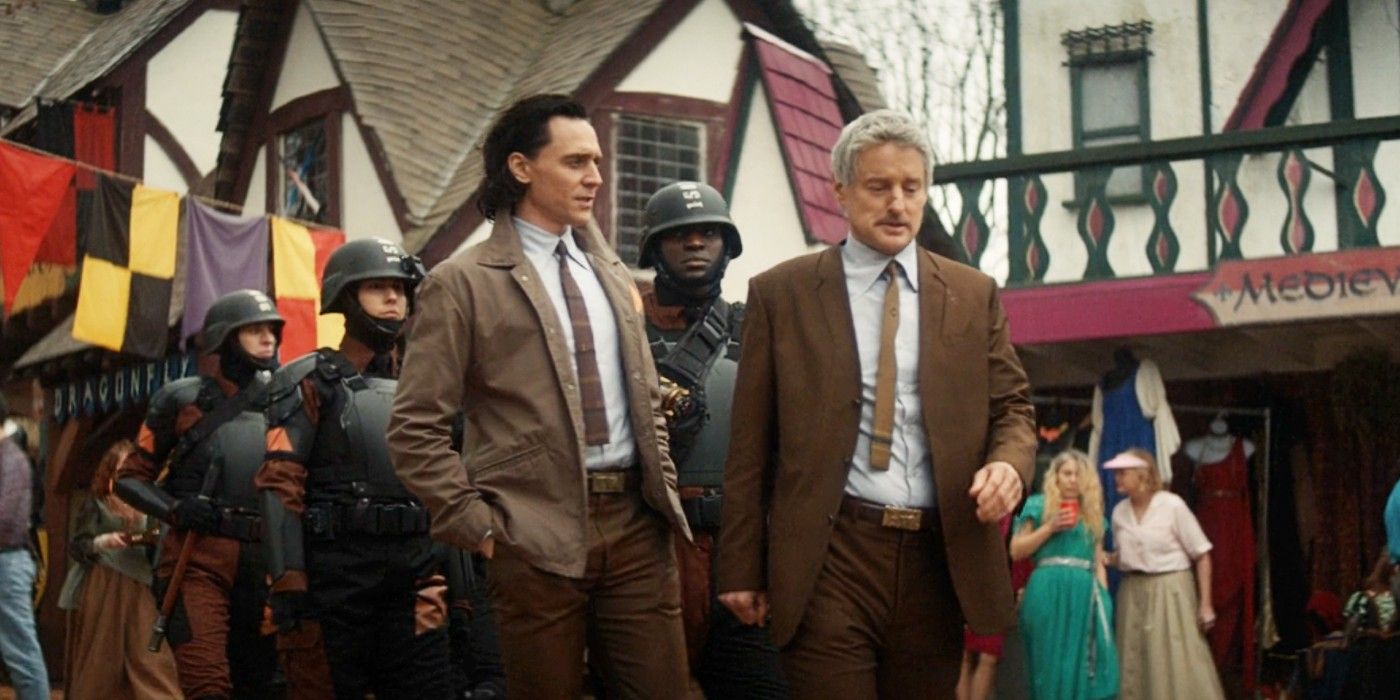
Loki's second installment begins at a 1980s renaissance fair - because some people just need that kind of thing. The opening scene's location of Oshkosh, Wisconsin feels too specific to have been picked at random and, sure enough, this is actually a heartwarming tribute to a key figure from Marvel's past. The original comic design for Mobius M. Mobius was based upon Marvel's own Mark Gruenwald, a long-serving and widely-respected writer and editor responsible for characters such as US Agent and Crossbones. Gruenwald was born in Oshkosh, explaining the locale's inclusion in Loki.
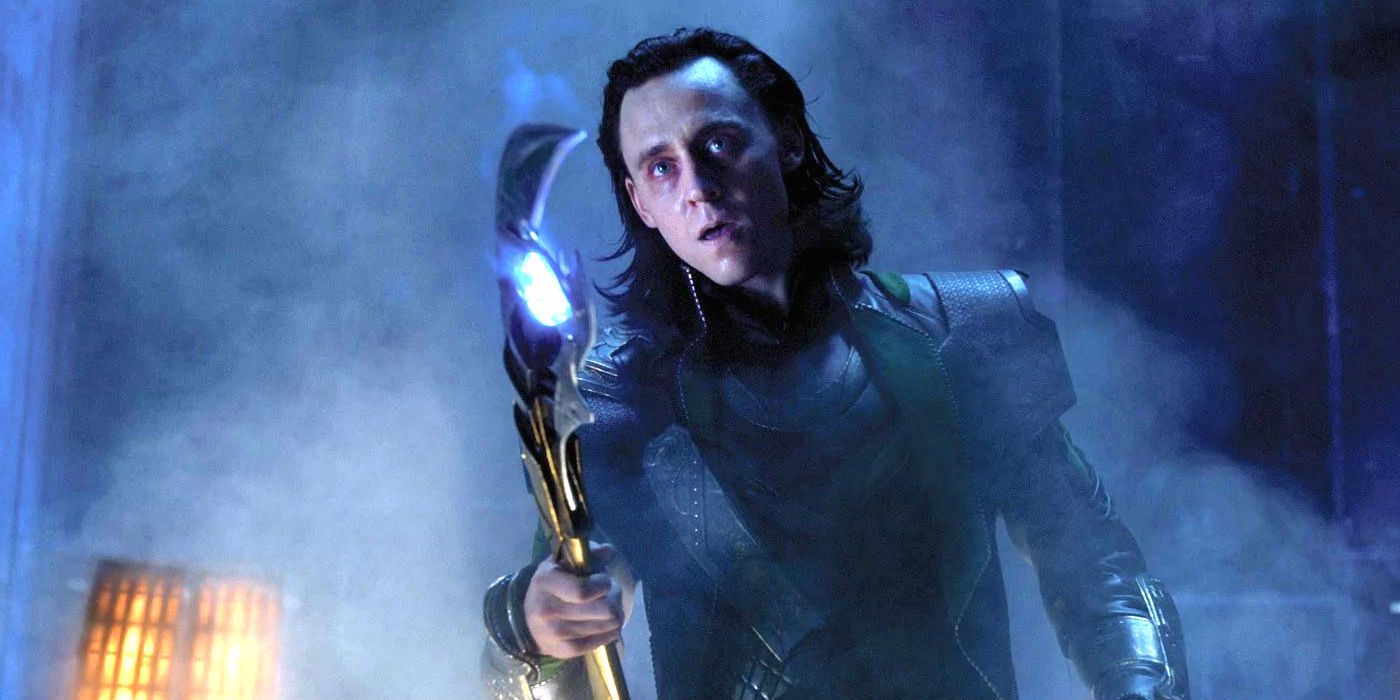
In the episode's opening sequence, a team of Minute Men are effortlessly trounced by the murderous Loki variant. Crucially, the villain touches a TVA agent, who then begins attacking nearby comrades, her distant eyes glowing green. This power is reminiscent of Loki's staff in The Avengers, where one touch allowed him to control the likes of Hawkeye and Erik Selvig, but also of Scarlet Witch's abilities in Avengers: Age of Ultron, both of which were caused by the Mind Stone. Loki soon reveals this affliction to be quite different from mind control, but the scene still feels like an MCU callback to Loki's past.
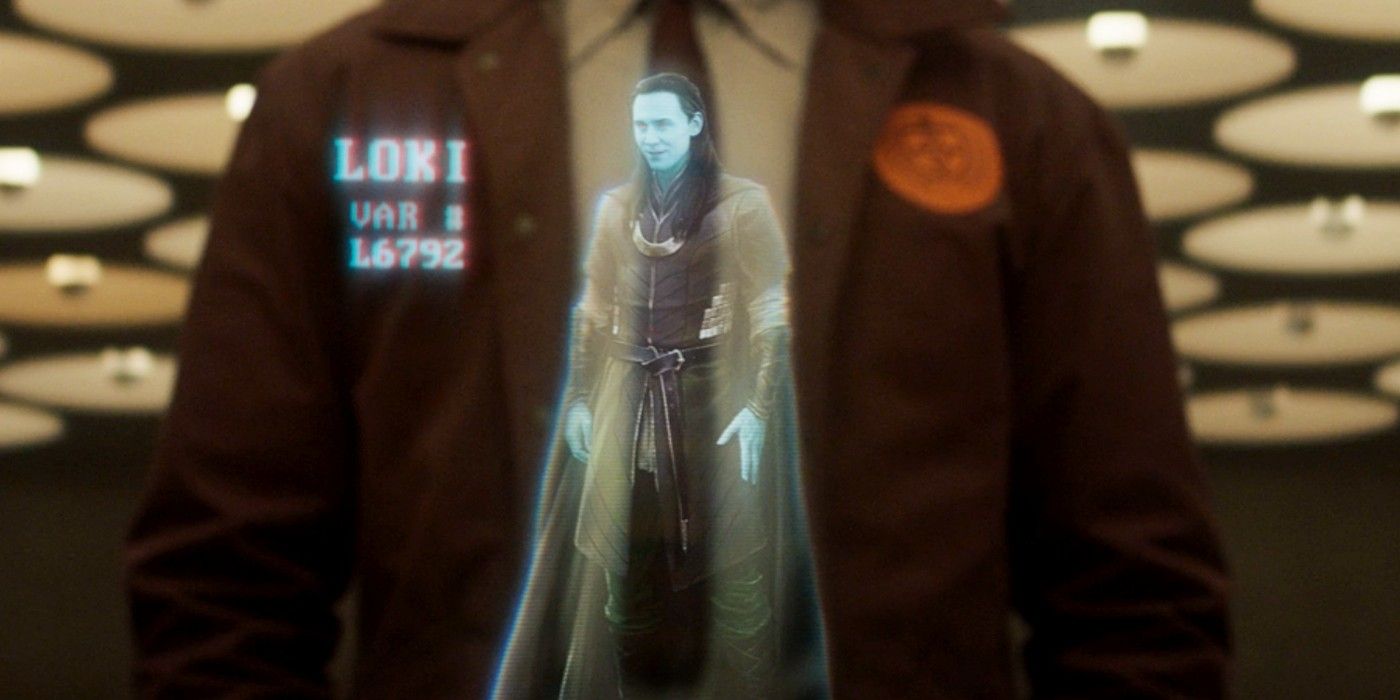
Preparing to visit the renaissance fair, B-15 and Mobius hold a briefing to explain the multitude of Loki variants one can meet while traversing timelines. The first of these examples is Tom Hiddleston's Loki, but with blue skin and a change of dress. This image nods to Loki's heritage as a Frost Giant, as revealed in 2011's Thor. Evidently, one Loki variant embraced his true biology, and somehow wasn't indoctrinated into the traditional fashion styles of Asgard.
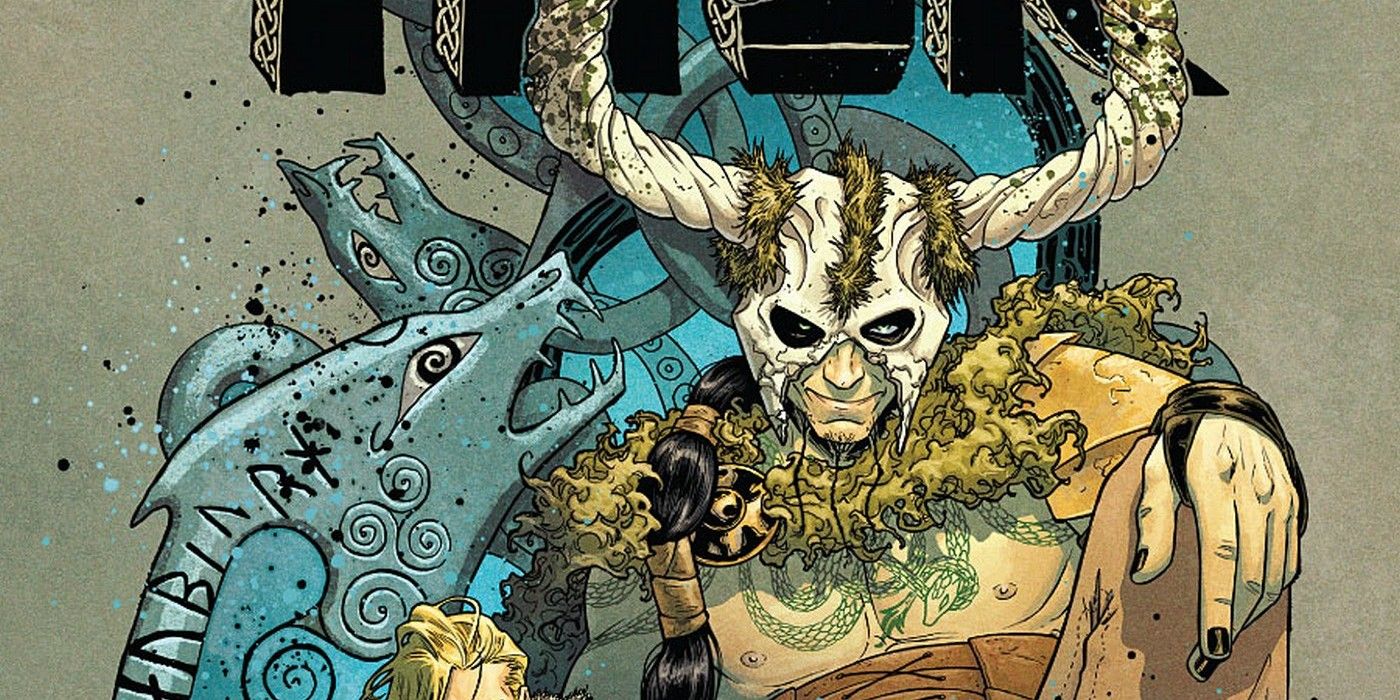
Also in the procession of Loki holograms are a Tour de France Loki, monstrous Minotaur Loki, green onesie Loki, and Viking Loki, but only the last of these connects to the Marvel comics, with the final projection a dead ringer for Loki in Mighty Thor Vol. 3. This era of the character donned a viking-esque helmet and wrapped a fur shawl around his shoulders, somewhat similar to the ancient version glimpsed during Mobius' slideshow.
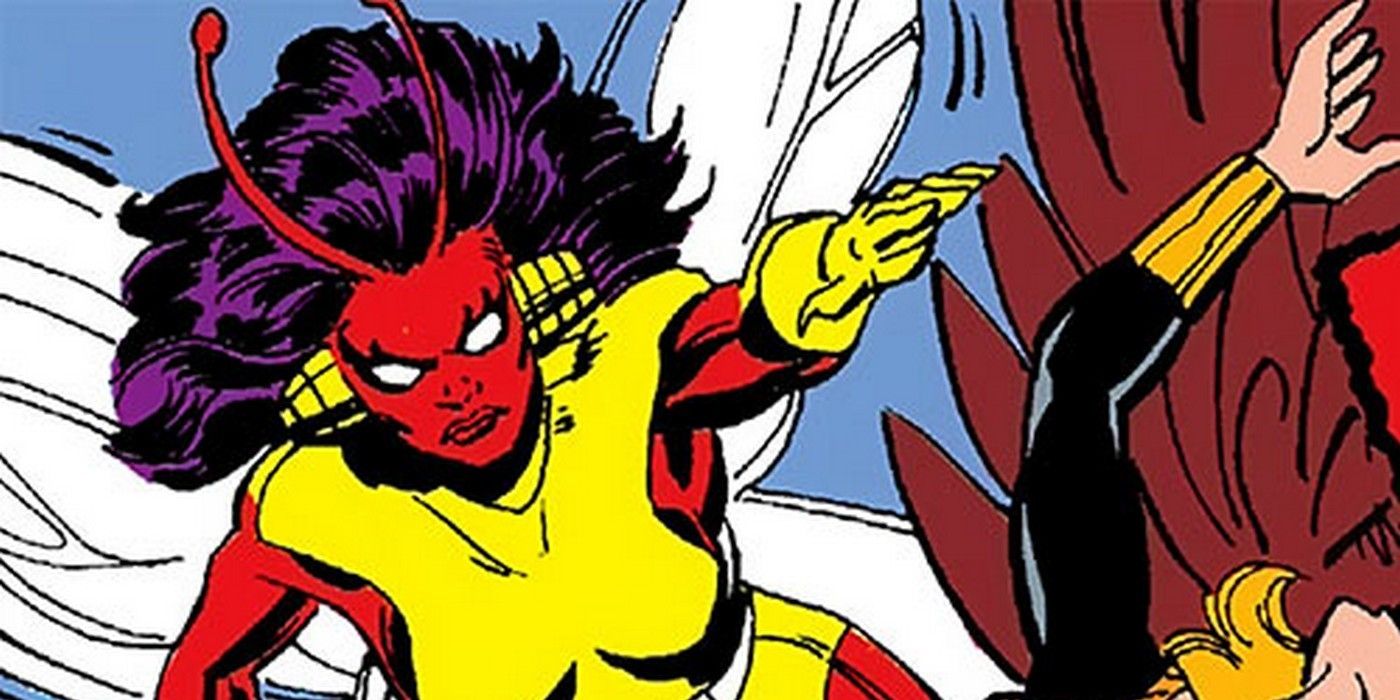
As the second squad of Minute Men wind their way through cosplaying revelers drunk on mead, one of the stalls is clearly labelled "Dragonfly Armory." This is apparently where attendees can pick up blunted swords, wooden shields, and other recreational battle gear, but the sign may also allude to Dragonfly, a hero from the Marvel comics yet to debut in the MCU. More frequently associated with the X-Men, there's no obvious connection between Dragonfly and Loki. The name could've been picked simply for sounding vaguely Medieval.
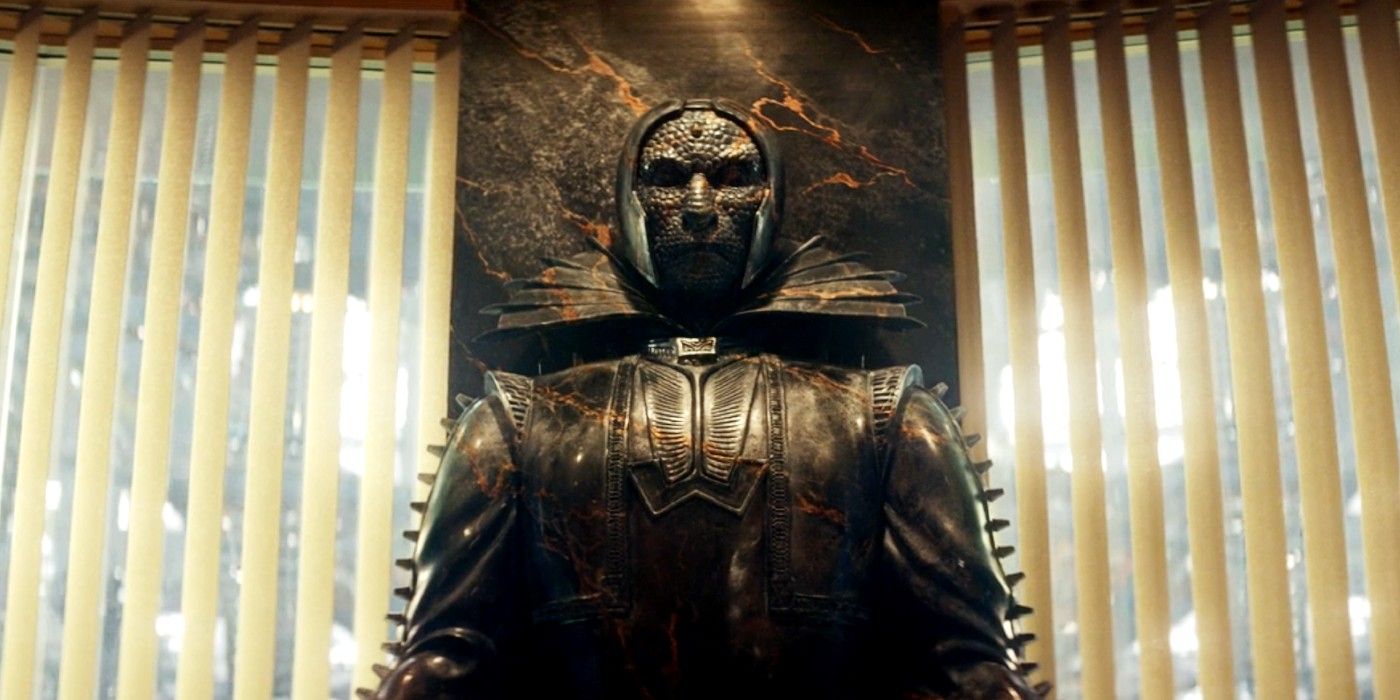
Ever since the three stone faces of the Time-Keepers were revealed, one of the trio (chap in the middle) has been compared to Kang the Conqueror. Though still unlikely, episode 2's Renslayer scenes add weight to the theory. The statue directly behind Renslayer does bear a visual resemblance to Kang, particularly the face-hugging helmet, and said Time-Keeper always being positioned in the center might denote his importance. To fuel the speculation further, Gugu Mbatha Raw's character displays more personality in episode 2, and her unerring admiration for the Time-Keepers becomes clear. She also seems to be one of very few in direct contact with these temporal overlords, and in the Marvel comics, Renslayer is romantically involved with Kang. There might be something in a Kang-like statue standing directly behind her office chair.
If that wasn't enough to rouse suspicion, Mobius tells Renslayer that he's glad to have never met the Time-Keepers, and then begins, "that one looks like he..." before being cut off. Curiouser and curiouser...
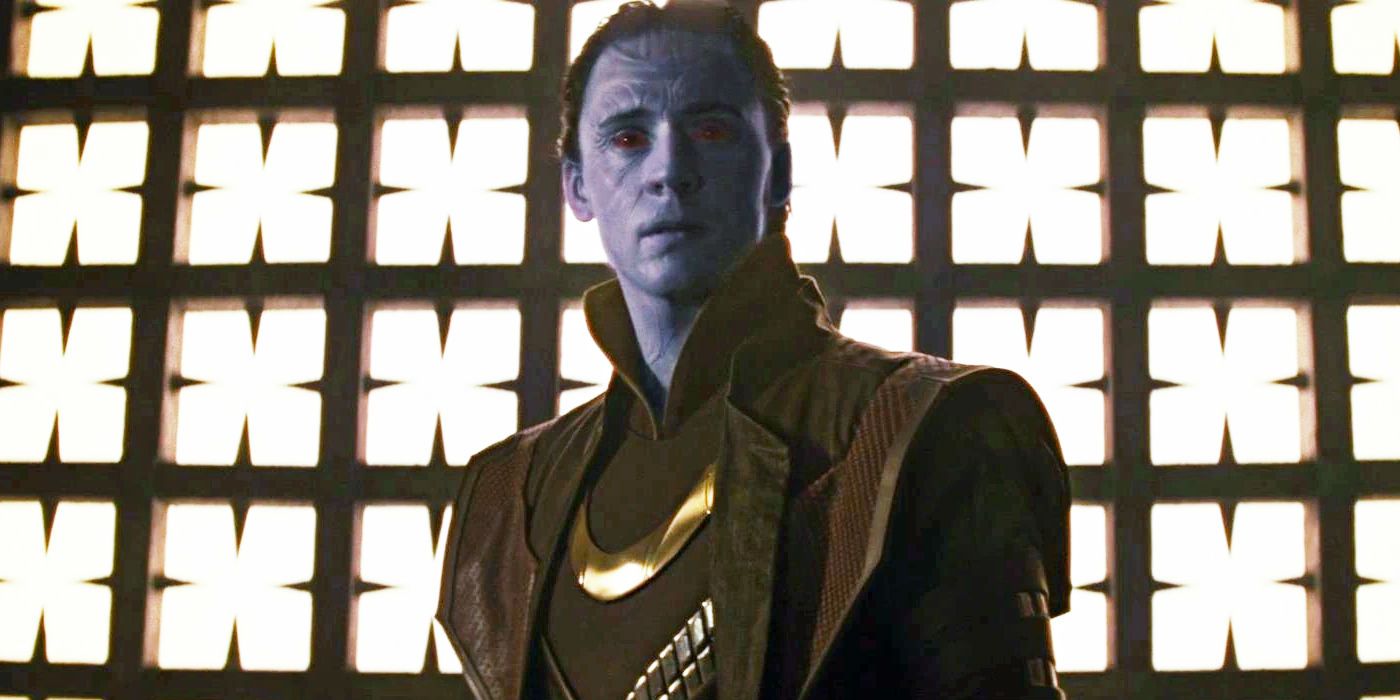
Loki's MCU movie arc rarely acknowledged his Frost Giant ancestry, focusing more on the mischievous one's relationship with Asgard. By contrast, Disney+ is keen to remind audiences exactly where Tom Hiddleston's character came from. Not only are there constant references to "Laufeyson" throughout the two episodes so far (as well as the aforementioned blue-skinned hologram variant), but Mobius accuses Loki of being a "scared little boy shivering in the cold... that ice runt." Although the metaphor works irrespective of Loki's biology, it's a stinging insult for someone whose world was turned upside-down upon discovering they were a secret Frost Giant.
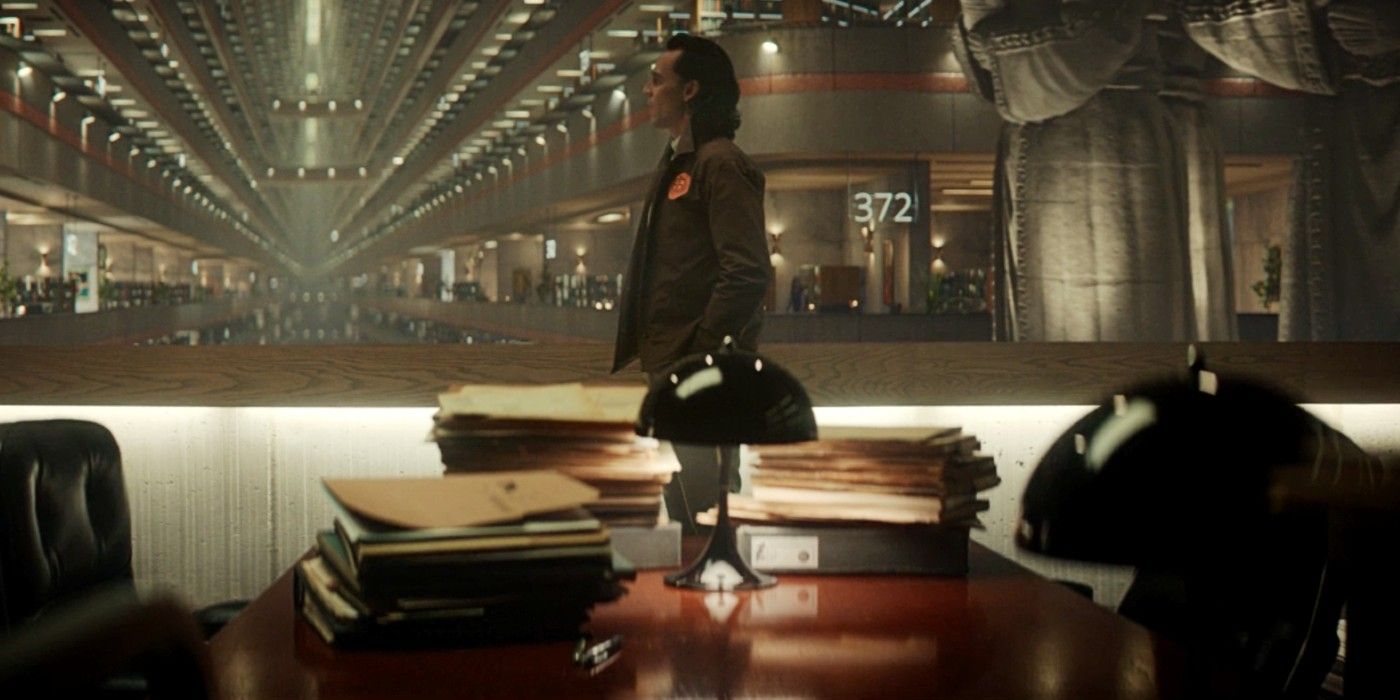
When a frustrated Mobius assigns Loki to library duty, the number 372 hangs prominently in the background. This is most likely a nod to the corresponding 1986 issue of The Mighty Thor, in which the TVA's Justice Peace plays a major role. The comic marked a rare occasion of a TVA member appearing on a Marvel front cover.
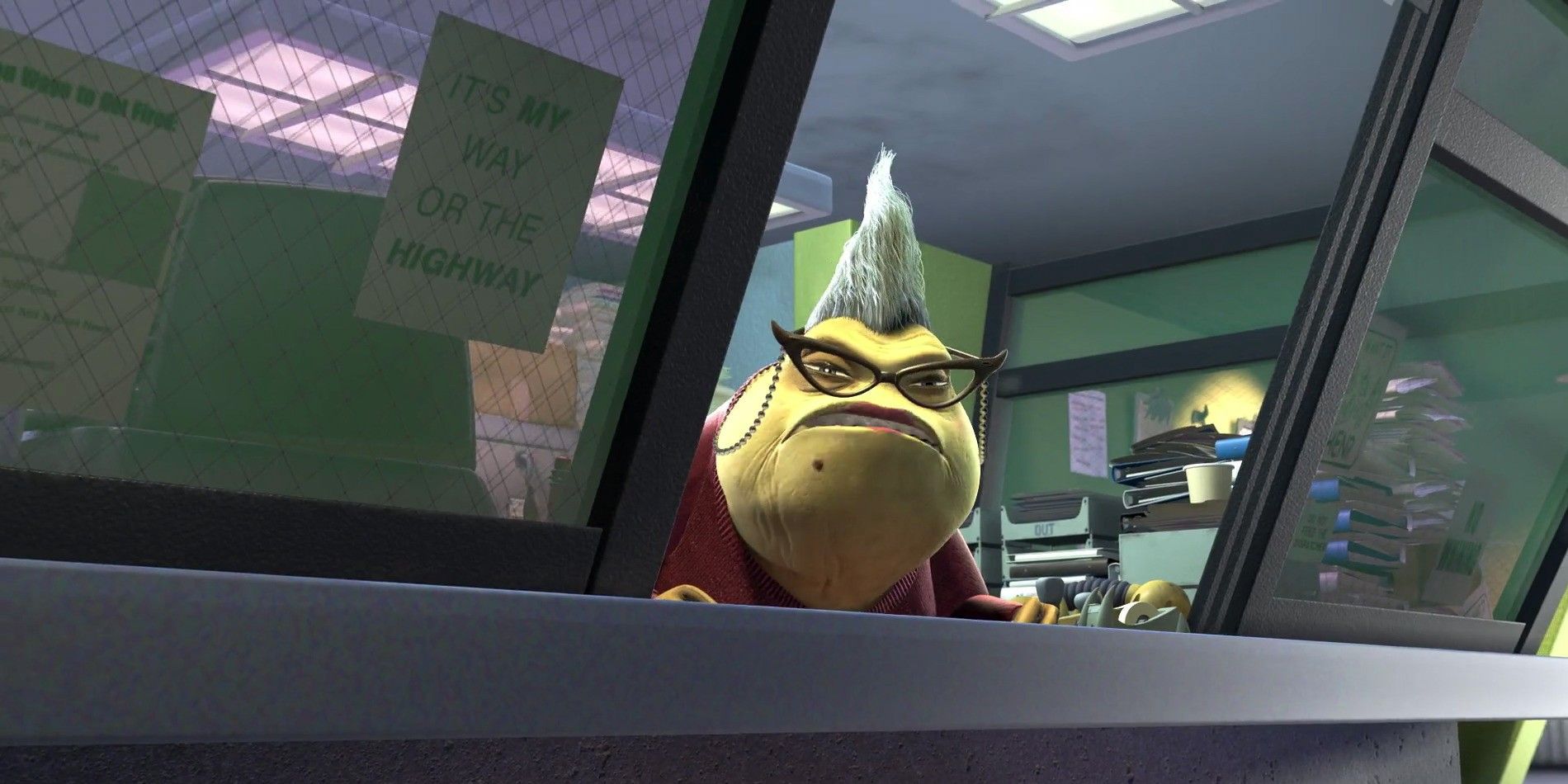
Hoping to exploit his punishment and learn more about the TVA's creation, Loki lobbies the receptionist for access to files. Utterly unmoved by his pleas, the expressionless assistant coldly refuses, allowing Loki access to one file only - his own. Intentionally or otherwise, this stern figure is essentially a human version of Roz, the receptionist from Monsters Inc., right down to the distinctive shape of her glasses. In addition to the generally gruff demeanor and uncooperative attitude, the TVA assistant shares Roz's monotone voice, and both are sticklers for rules. Amusingly, this would put Loki in the Mike Wazowski role.
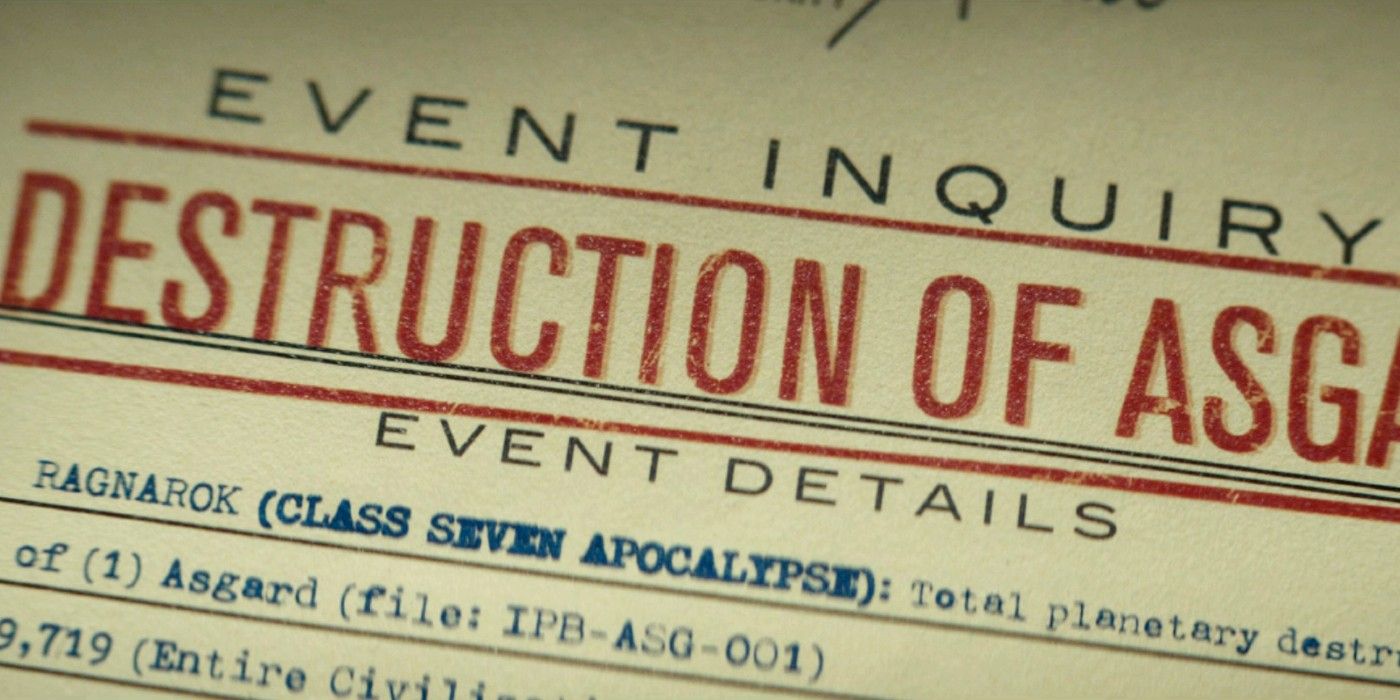
Flicking through the future he should've had, Loki chances upon a file detailing the Asgardian apocalypse, thus providing a direct link to 2017's Thor: Ragnarok. The TVA paperwork mentions "Ragnarok" by name, and lists the death toll at around 10,000. Brief shots of the document also confirm that Asgard's destruction was part of the Time-Keepers' Sacred Timeline. When Loki mentions his discovery to Mobius later in the episode, he name-drops Surtur - the fiery beast that actually polished off Thor and Loki's home planet.
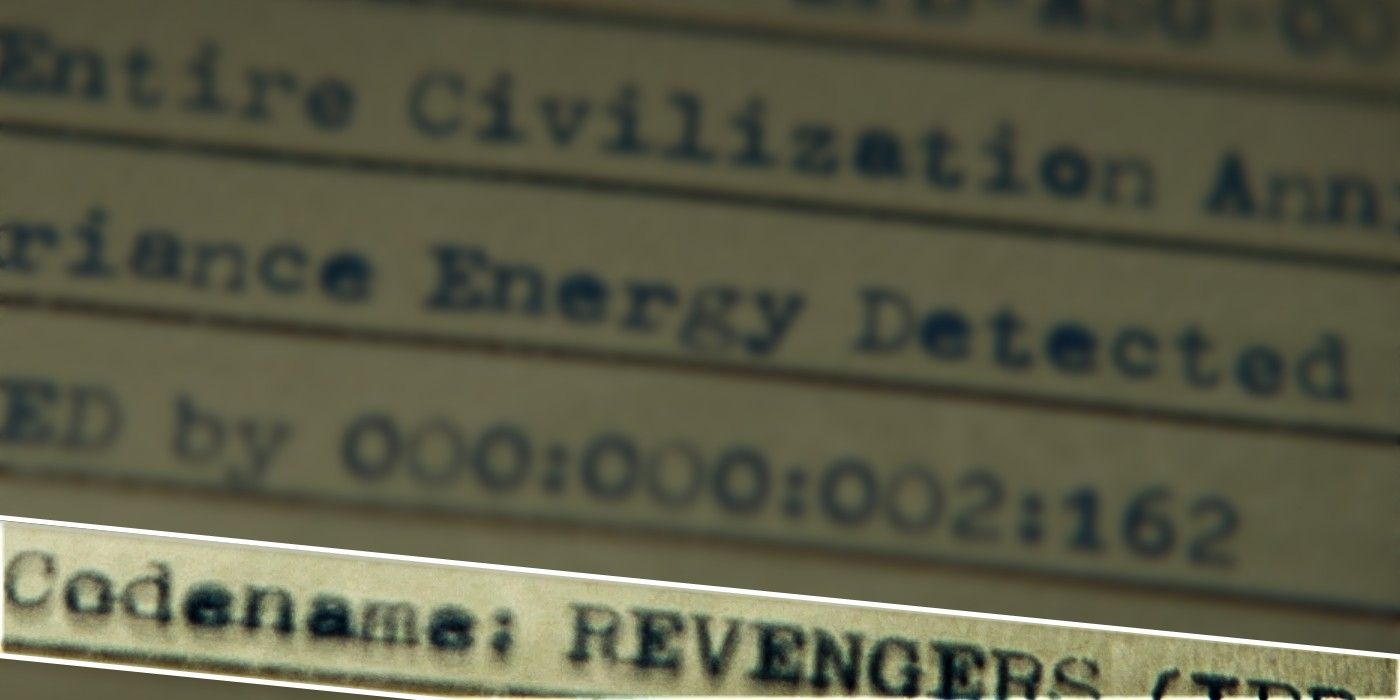
Another noteworthy inclusion within the TVA's file is mention of "The Revengers." This was the name Thor came up with for himself, Loki, Bruce Banner and Valkyrie when the quartet banded together to escape Sakaar and defeat Hela, but the line was played mostly for laughs. Thor was obviously missing his Avenger friends, and forming the "Revengers" was a transparent ploy to get that feeling of camaraderie back. It's interesting that the TVA has officially recognized The Revengers as a proper code name.
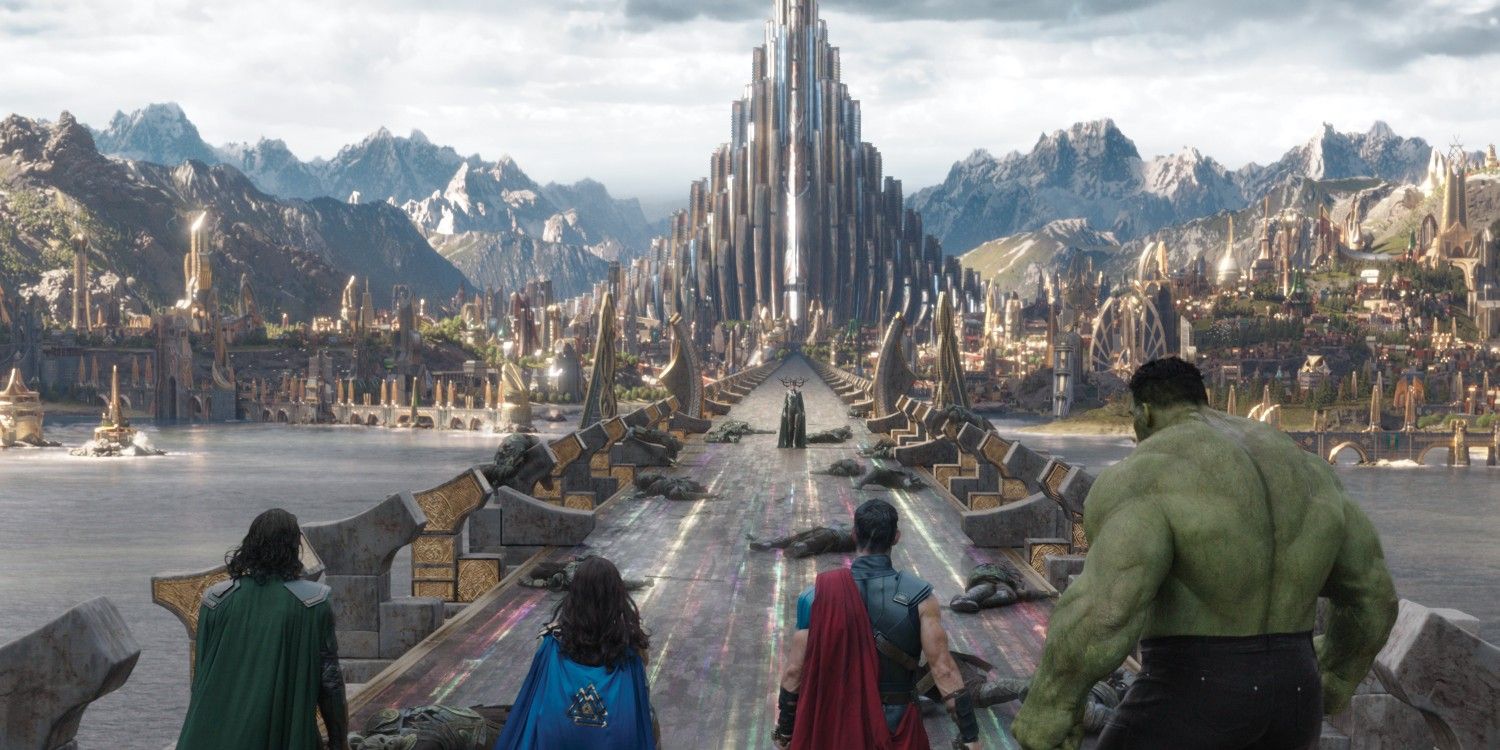
When Loki explains his apocalypse hypothesis to Mobius, he uses Asgard as an example, claiming he could drop into the timeline just before the planet's destruction and do whatever he liked without affecting the Sacred Timeline. Interestingly, the first thing Loki would do in this scenario isn't tell his brother that he loved him, or retrieve a memento of his mother, but push Hulk off the Rainbow Bridge. It's a line psychologists would have a field day with, but also calls back to the final battle of Thor: Ragnarok. In Bruce Banner's defining moment, he leaps onto the colorful bridge, lands in a crumpled heap, then transforms into Hulk to battle a giant wolf. Incidentally, the wolf itself wrestled Hulk from the bridge, stealing Loki's thunder somewhat.

Loki is rapidly developing a running theme of featuring discontinued drinks brands from years gone by. Mobius enjoys an ice cold can of Josta (and does again this week), but Casey seems to prefer a fresh carton of Boku. This brand ran in the U.S. from 1990 to 2003, and apparently holds more value in Casey's life than a handful of Infinity Stones.
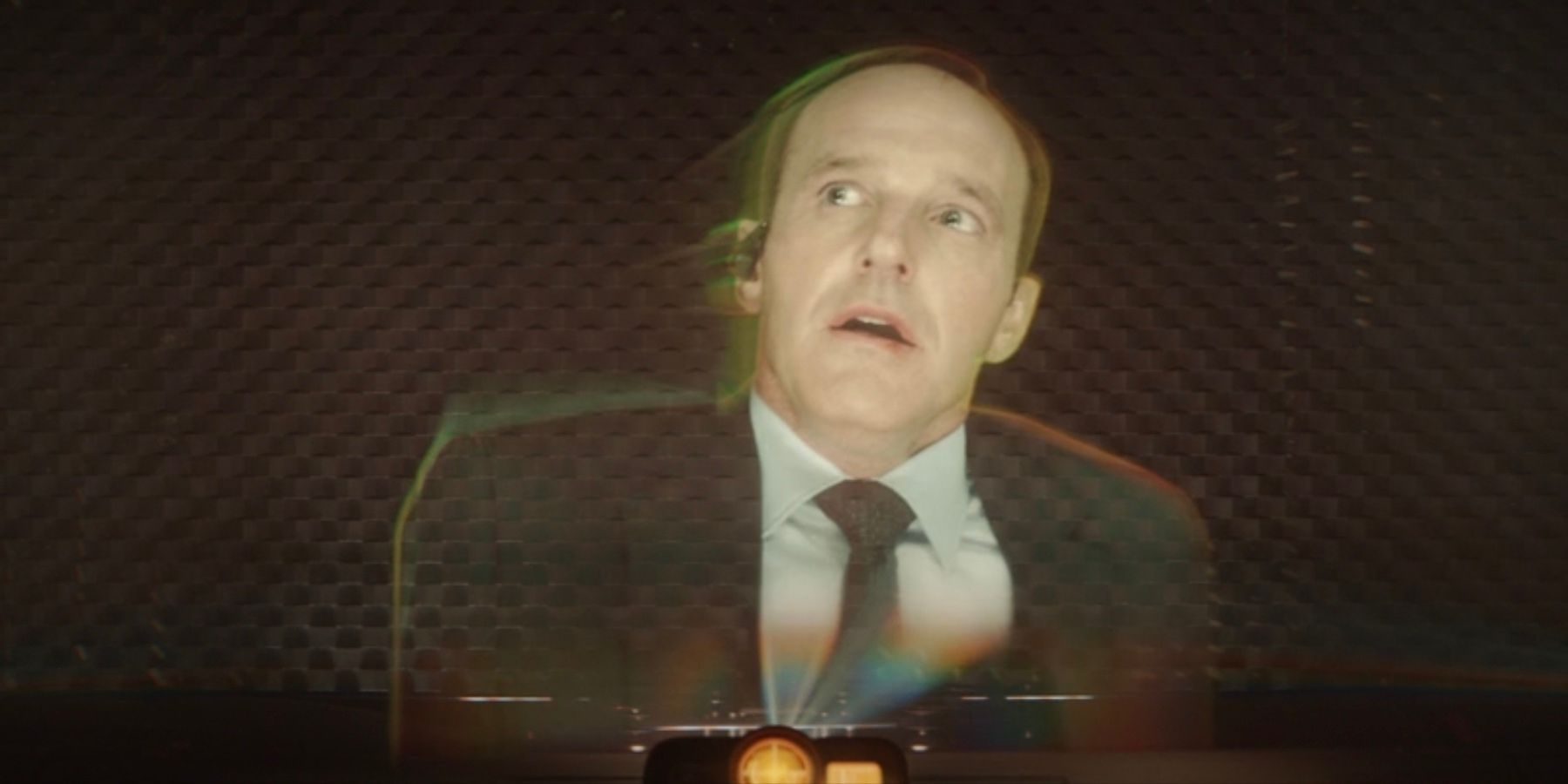
Loki promises Mobius he'd never stab a person in the back, but Owen Wilson sees through the deception, reiterating that he's only too aware of all the times Loki literally stabbed someone from behind. The best example from MCU history would be the death of Phil Coulson, in which Loki magicked his way behind the SHIELD agent and rammed him through the chest with the Mind Stone scepter. One could also count Laufey's death, as Thor assailed him from behind too, albeit with a ranged spear. In any case, most of the 50 or so Loki back-stabs have occurred off-screen.
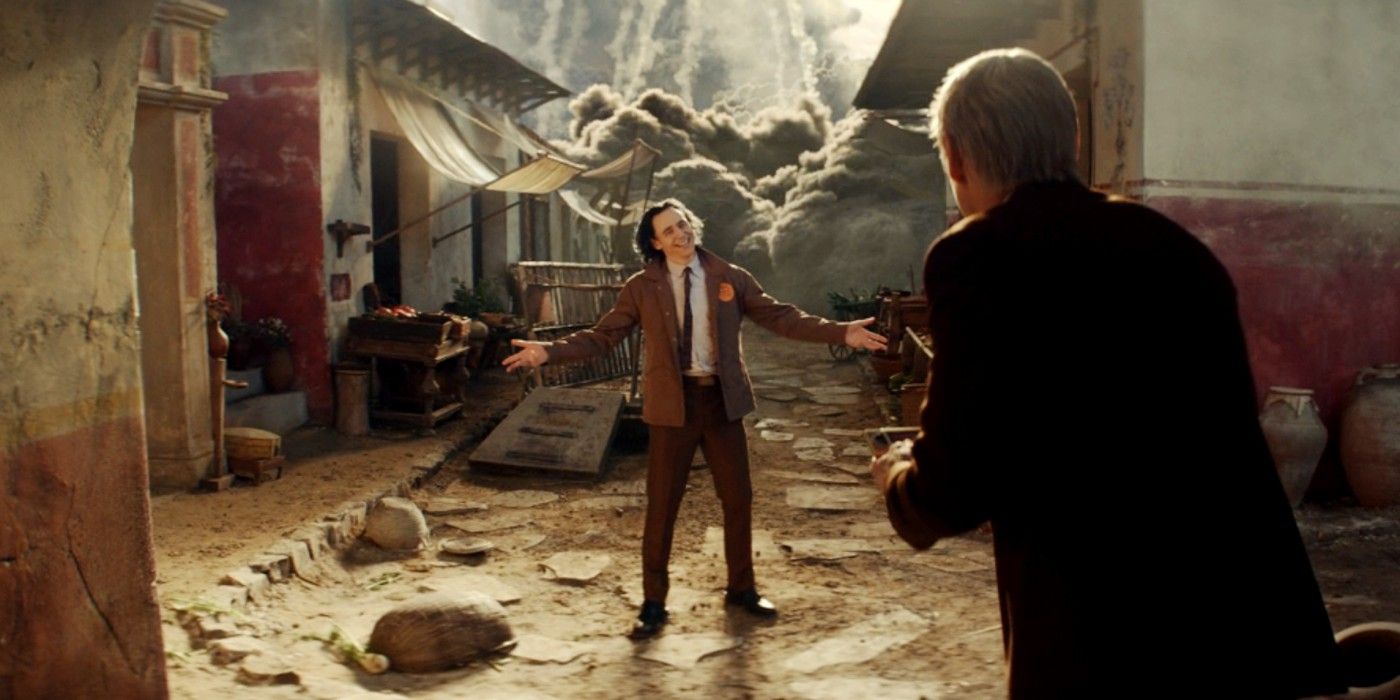
Carrying out an experiment in Pompeii before the infamous eruption, Loki frees a cart full of goats, bidding his "horned friends" a happy few moments of liberty before death. This line is a wink toward Loki's penchant for wearing horned headgear, which has apparently led to an affinity for goat-kind.
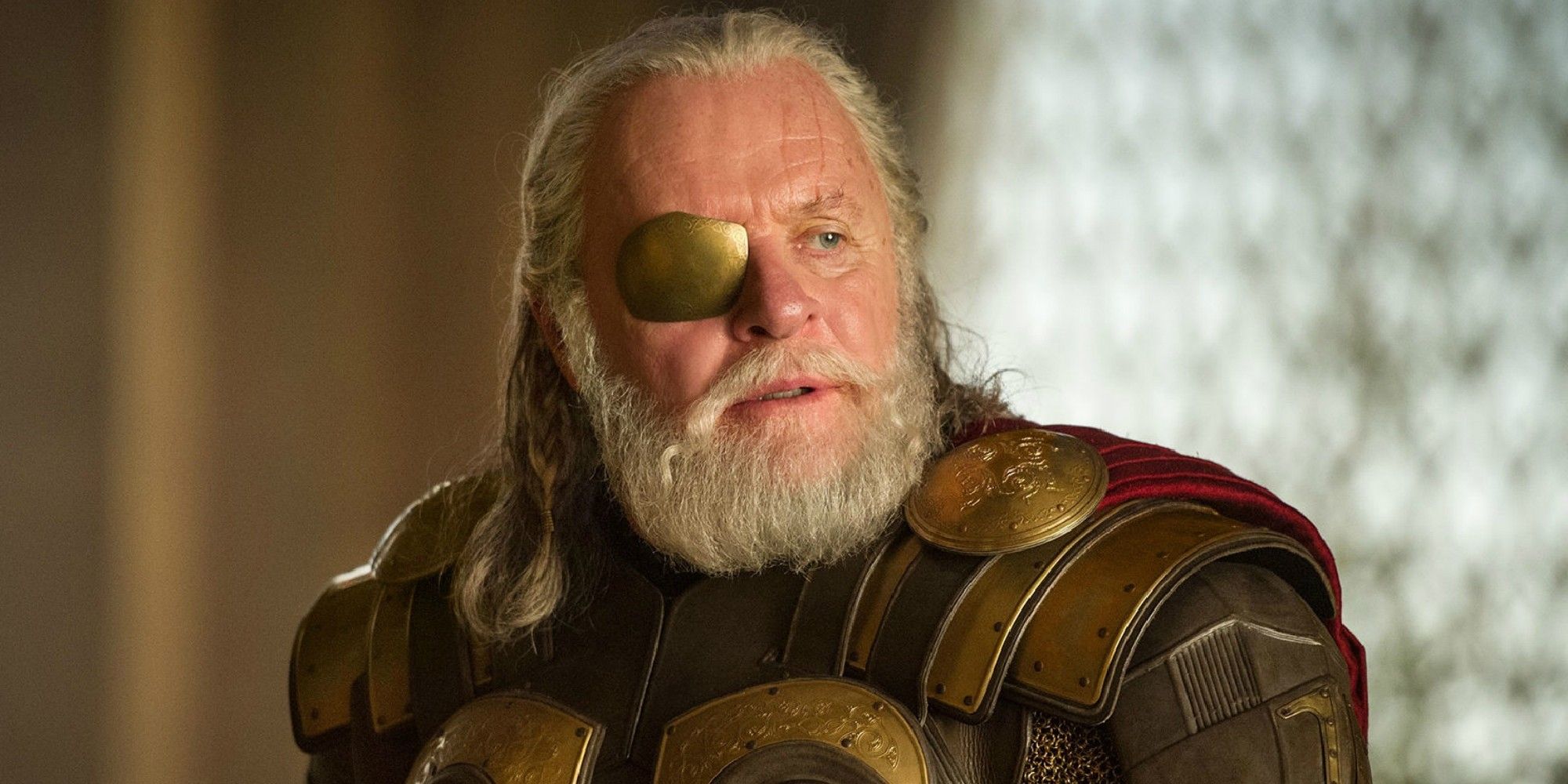
Waxing philosophical with Mobius, Loki asserts that no one is ever truly bad, and no one ever entirely good. This outlook could apply to a few MCU characters, but in the context of 2012 Loki, he's most likely referencing Odin. Loki's adoptive father was hailed as a paragon of virtue, both on Asgard and beyond, but the God of Mischief later discovered his father was a liar and conqueror who history remembers far too kindly.
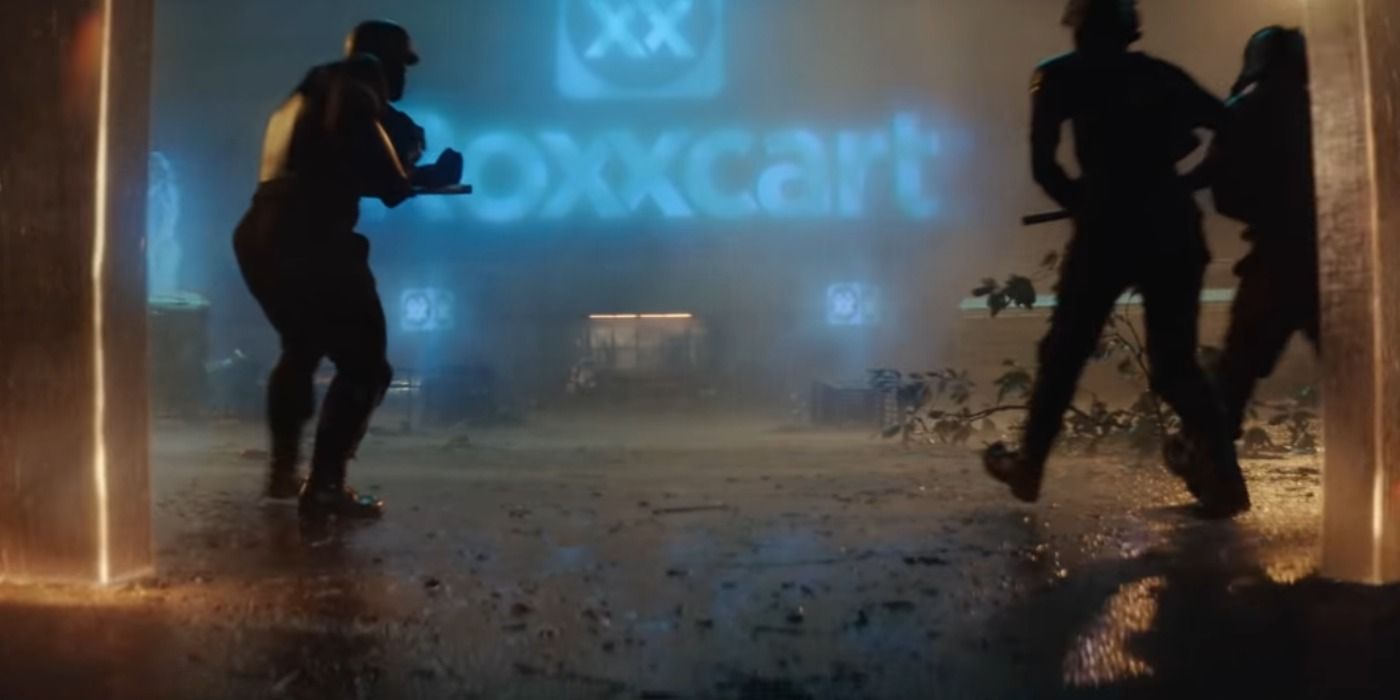
Traveling into the near future, Loki and his TVA companions find themselves in a Roxxcart shopping mall during a hurricane. It's almost inevitable that Roxxcart is connected to Roxxon, a fictional energy corporation from the Marvel comics, responsible for a multitude of evil, money-grabbing schemes. Roxxon's existence in the MCU was confirmed via the Iron Man movies, but the company is yet to play a significant role. Loki's addition of "Roxxcart" proves that Roxxon will become more influential in future films.
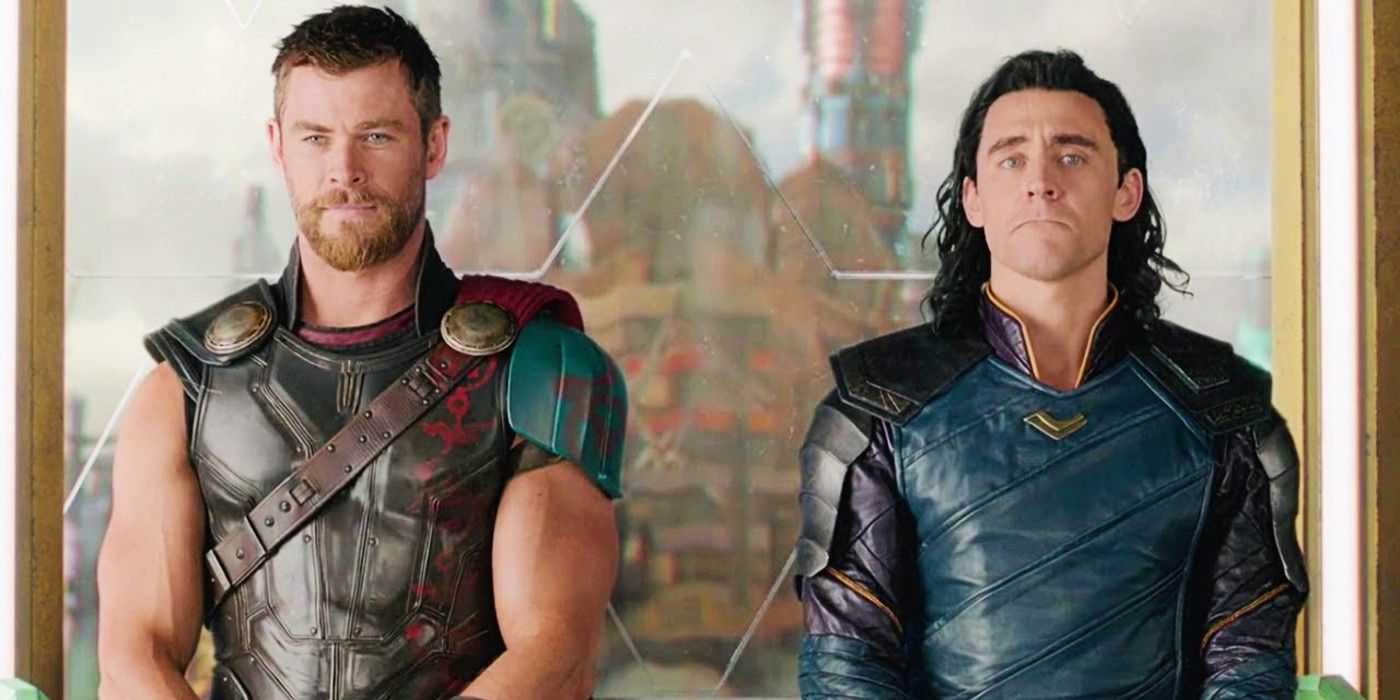
Coming face to face with his own self, Loki finally realizes why Thor found him so annoying in the past. Examples of their brotherly bickering can be found throughout the MCU, but highlights include the reunion in The Avengers ("do I look to be amused?"), Thor's poor piloting in Thor: The Dark World, and when Thor returned to Asgard to find his brother masquerading as Odin in Thor: Ragnarok.
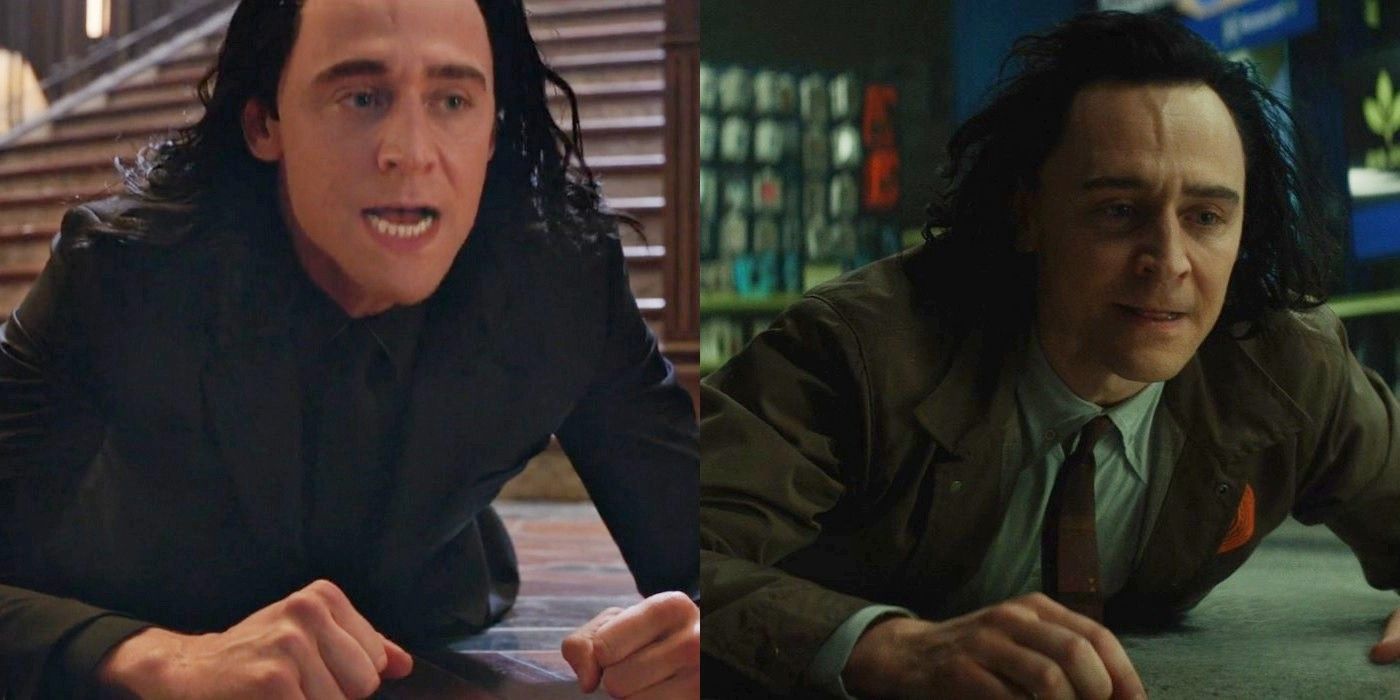
While the enemy Loki variant is still in the guise of a trucker, he tosses Tom Hiddleston's Loki across the shiny Roxxcart floor. When our hero arises, the shot is virtually identical to the moment Loki lands after falling through Doctor Strange's multiverse trap in Thor: Ragnarok.
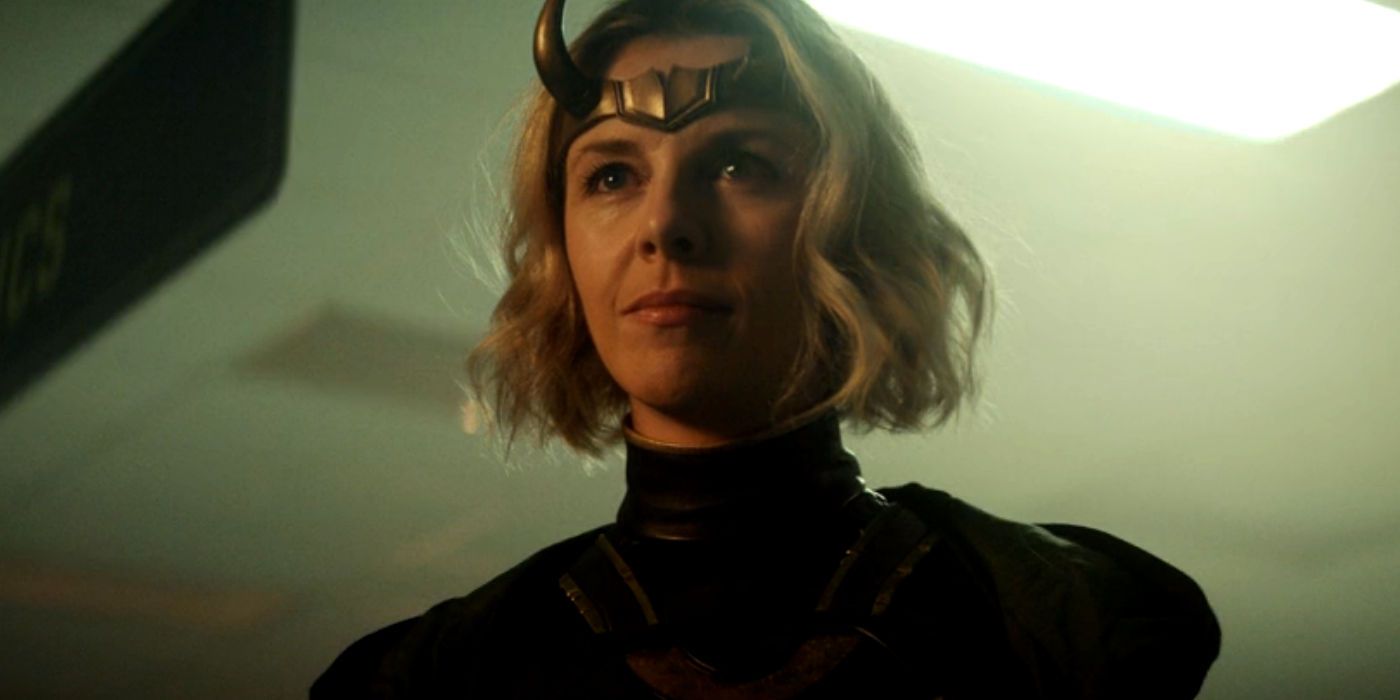
The standout scene of Loki's second episode is Sophia Di Martino's Lady Loki being revealed as the mysterious variant antagonist, and this version of the character hails directly from the comic books. Lady Loki debuted in 2008 after the destruction of Asgard, with Loki's spirit occupying a new, female vessel. Despite the rebirth, Lady Loki was a continuation of the original character, rather than a separate identity. Think Jodie Whittaker's Thirteenth Doctor, rather than a Marvel "What If..." Subsequent versions of the comic book God of Mischief have also been female, with Loki confirmed as gender-fluid. It remains to be seen whether this origin will be adapted for Sophia Di Martino's MCU character.
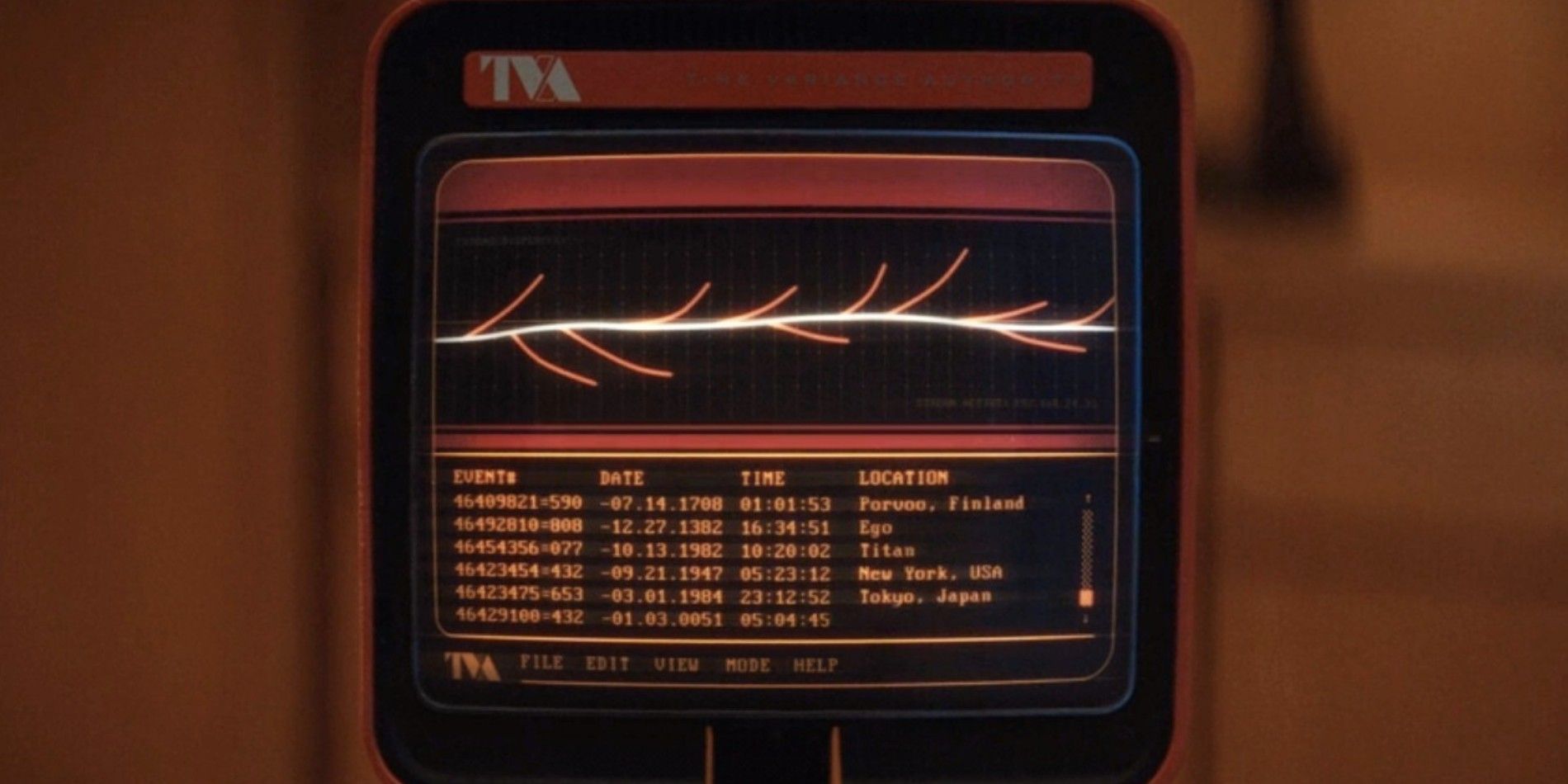
After Lady Loki triggers her string of timeline charges stolen from Minute Men, the TVA's readouts begin going haywire, as branch timelines develop en masse. The list confirms time variations occurring at a host of familiar MCU locales, including Vormir (the Soul Stone planet), Asgard, Thanos' home of Titan, Xandar, Ego the Living Planet, Sakaar, and Kree-occupied Hala.
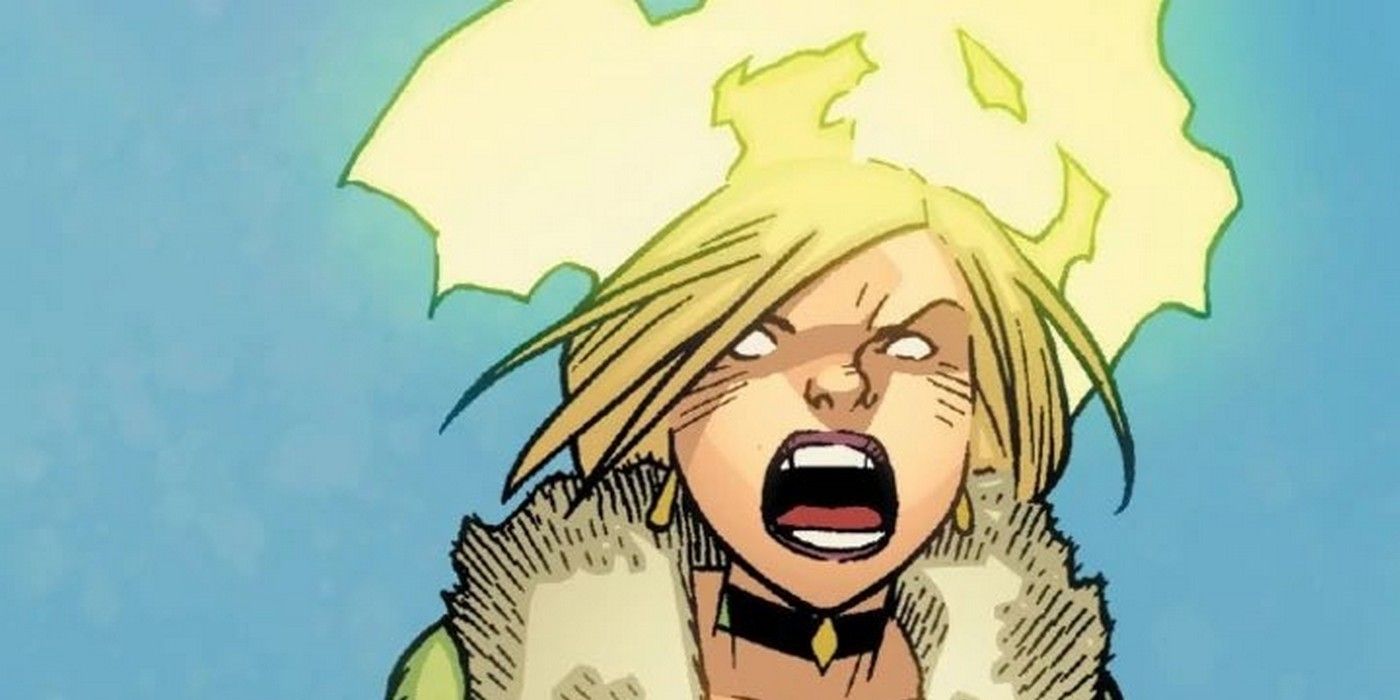
Marvel fans know to stick around during the credits, but if Loki's anything to go by, they should also be reading the foreign credits. As the names run by, Lady Loki is actually listed as "Sylvie" on one cast list. This could allude toward Marvel comics' Sylvie the Enchantress, who took that title after Loki himself imbued her with powers. Going by the full name Sylvie Lushton, this Earth teenager bears little resemblance to Sophia Di Martino's Lady Loki, but until her origin story is revealed, it's impossible to rule out a connection.
Loki episodes release every Wednesday on Disney+.
from ScreenRant - Feed https://ift.tt/3cME47G

No comments: